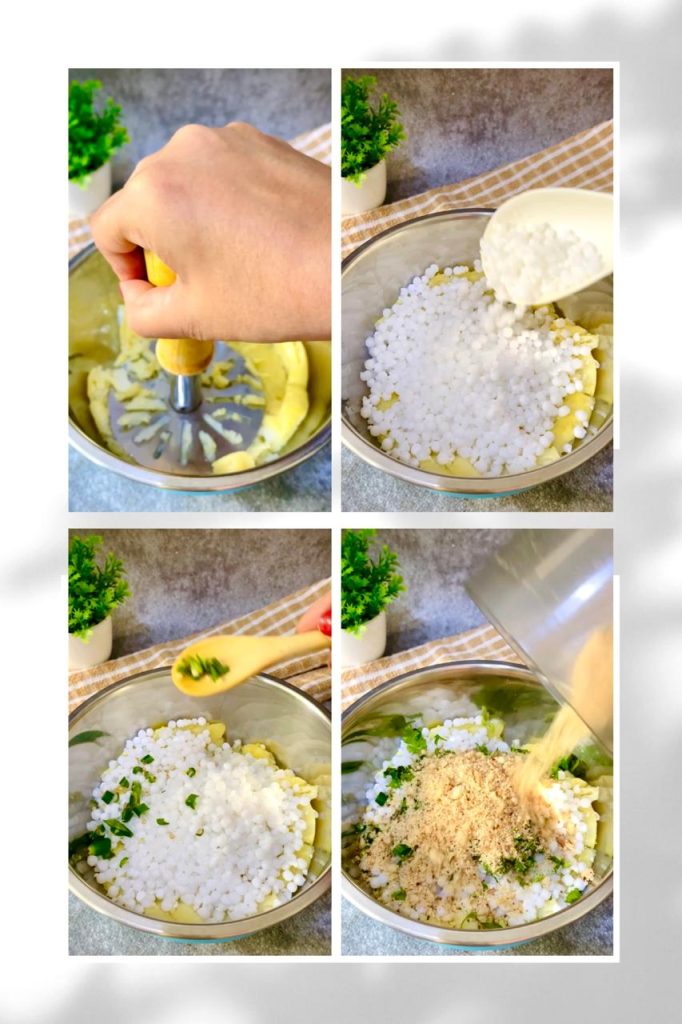
Hearty creamy corn chowder is a classic dish that has been loved for centuries. Corn Chowder is a type of chowder that originated in the Midwestern and Southern United States in 1800s, where corn was a staple crop. A bowl of chowder is as satisfying in the summer heat as it is in the winter when you want a bowl of cozy warmth. It is cream based soup which is loaded with sweet corn and potatoes and flavour packed corn broth. It is an absolute treat when fresh corn is in abundant. Fresh corn offers the best flavour but if you can’t find fresh corn, you can totally substitute it with frozen sweet corn kernels. Most chowder recipes call for either bacon or seafood. But fear not, this corn chowder is completely vegetarian-friendly!
What to serve Chowder with?
I like chowder with a homemade crusty garlic bread. It is like a match made in heaven. They are so meant to be together. But honestly, it is great just as it is also. I have also added boiled pasta in chowder which makes it a complete meal in a bowl.

Leftover and Storage
Leftovers can be kept in an airtight container in the fridge and reheated in a saucepan. I wouldn’t recommend keeping longer than 3-4 days due to cream in the recipe.
I do not recommend freezing it because of cream. Creamy dishes tend to get an unpleasant texture when frozen and can separate when reheated.
Recipe: serves 2
Ingredients:
- Sweet Corn Kernels: 1 cup
- Fresh Cream: 1.5 cups (I used cream with 25% fat)
- Olive Oil: 2 tbsps
- Garlic: 6 cloves, chopped
- Onion: 1 small size, chopped
- Carrots: Handful, chopped finely
- Capsicum: Handful, chopped finely
- Mushrooms: Handful, chopped (retain the stems)
- Black olives: 4 to 5
- Potato: 1, medium, chopped finely
- Pasta: 12 to 15 elbow pasta (you can use whichever you like)
- Thyme: 1 tsp
- All Purpose Flour: 1/2 tsp
- Salt to taste
- Peppercorns: 7 to 8, freshly ground
- Chilli flakes: 1/2 tsp or more as per taste
- Pasta stock/Vegetarian Stock: 1.5 cups
- Lemon juice: just a few drops
Method
- Boil pasta as per instructions and retain the stock.
- In a preheated olive oil, add garlic and sauté till sticky. Now add onion and sauté till translucent.
- Add the veggies except corn kernels. Season it with salt and thyme.
- Sauté till they start releasing all the juices and potatoes soften.
- Sprinkle flour on the veggies and sauté for ten seconds.
- Now add cream and bring it to simmer. Lower the flame and stir occasionally so that it doesn’t stick to the bottom.
- Add corn kernels, olives, all the seasoning and pasta stock.
- Cook till you achieve the desired consistency. Check for seasoning.
- Add cooked pasta and give a nice mix.
- Switch off the flame.
- Finish it with lemon juice. Cover it for 5 mins then add cilantro leaves for garnishing.
- Serve hot with garlic bread.
Tips:
- You can add veggies as per choice. Broccoli, zucchini, bell peppers go very well.
- I personally don’t prefer a thick consistency in soups hence I added less of flour.
- Preferably use a non-stick pan.
- Add cooked pasta at the time of serving or pasta will become soggy.
I hope you enjoyed reading this recipe. Do give this recipe a shot. I am sure this recipe will bring you a lot of joy. If you try this recipe, do give us a shout out. Just click a picture and tag us on @masala.monk or use the hashtag #MasalaMonkRecipe and share on Instagram and Facebook. We would love to hear from you.























